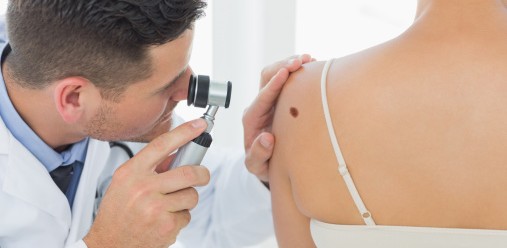Can the number of moles predict risk of Melanoma?
Rates of melanoma have been rising for over 30 years in the U.S. It is expected that nearly 9900 people will die this year from Melanoma. According to the American Cancer Society, the lifetime risk of melanoma is 1 in 40 for whites, 1 in 200 for hispanics, and 1 in 1000 for blacks. Approximately 74,000 new cases of melanoma will be diagnosed this year.
Mole or nevus as they are also known, are benign pigmented tumors. While most moles will remain benign, it is believed that a person who has many moles has an increased likelihood of developing melanoma. In fact, a prior study published in 2014 concluded that those with moles were 4.6 more times likely to develop melanoma than those without moles.
A recently published study in the British Journal of Dermatology has determined that the number of moles on a person’s right arm may predict risk of melanoma.
A team of researchers from the Department of Twin Research and Genetic Epidemiology at King’s College, analyzed data from over 3500 caucasian twins during an eight year period. Specially trained nurses counted freckles and moles on 17 body areas of each subject. The findings of the study indicate that the number of moles located just above the right elbow was the strongest predictor of mole count over the whole body. More specifically, women with at least 11 moles on their right arm were more likely to have over 100 moles on their entire body. This equates to a 5 times greater risk for developing melanoma, according to the study.
A smaller study of 400 subjects was also conducted which did replicate the major findings.
If this finding were to hold up, this could have important implications for primary care medicine. This could allow earlier detection of those at risk for melanoma.
References:
Ribero S et al. Prediction of high naevus count in a healthy uk population to estimate melanoma risk . British Journal of Dermatology. 2015.
https://www.epworth.org.au/About-Us/News/Pages/Moles-and-the-risk-of-skin-cancer.aspx

